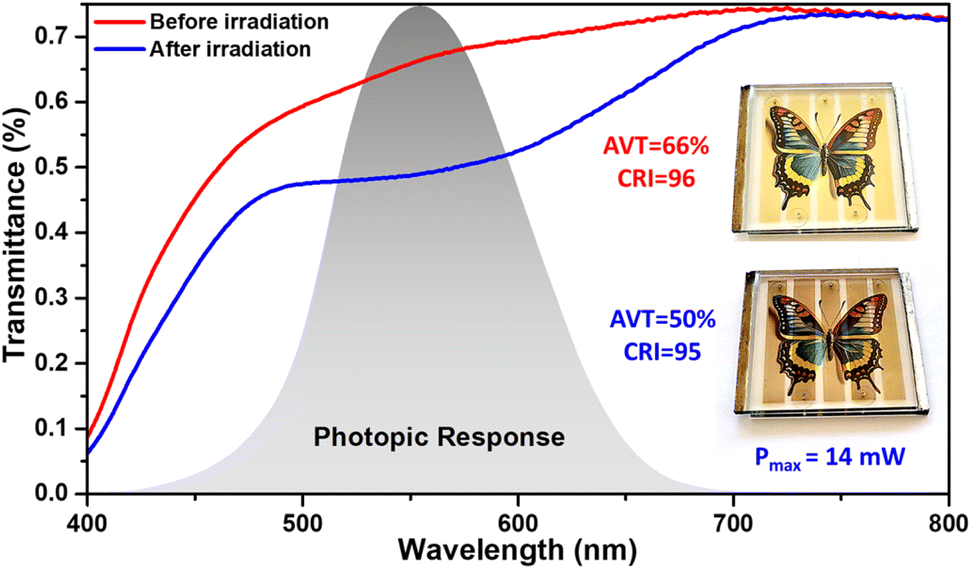Since the 1990s, alternative photovoltaic technologies to silicon have been developed for a wide range of applications in buildings, transport and greenhouse agriculture. Researchers at Irig are developing dye-based solar cells. They have produced a photochromic cell that darkens when illuminated but still reproduces colors. As this phenomenon is reversible, it opens the door to applications in the field of glazing with dynamic optical properties.
Researchers at IRIG have developed and characterized solar cells based on carbazole-substituted photochromic dyes from the diphenyl-naphthopyran family. Compared to the diphenylamine-substituted reference dye, these new dyes show improved color rendering in the visible spectrum, broad absorption and faster fading kinetics. The results show yields of up to 3%. In addition, the researchers fabricated a semi-transparent solar mini-module with an active area of 14 cm2, whose transparency varies from 66% to 50% and produces a power of 14 mW. The color rendering index is greater than 95, whatever the colouring state of coloration of the cells (see Figure).


Figure 1 Visible light transmittance of a solar cell integrated in a semi-transparent mini-module and photopic response spectrum of the human eye. Photo of a colored butterfly taken through the mini-module (total surface area: 23 cm2) in the non-activated state (top) and in the activated state (bottom). Power output was measured under 1 sun (1000 W.m-2).
These results demonstrate that molecular engineering of photochromic photosensitizers is a relevant strategy for the development of semi-transparent solar cells with dynamic optical properties. It is now possible to design transparent solar cells that can change color, and whose light transmittance is self-adaptative to light conditions, while ensuring the visual comfort for users.
This work was funded under the European Union's Horizon 2020 research and innovation program (grant agreement number 832606; PISCO project).